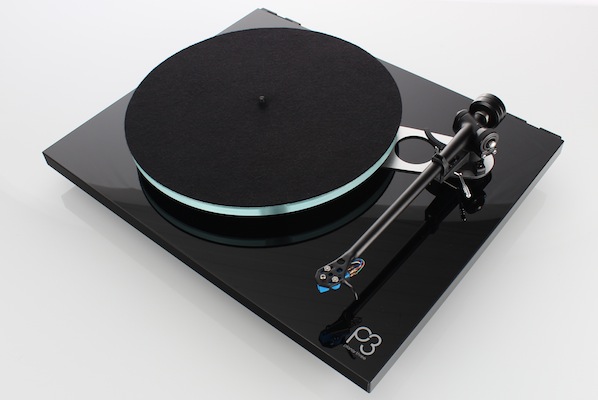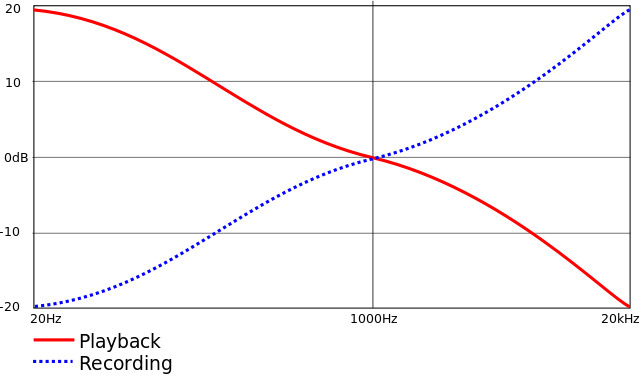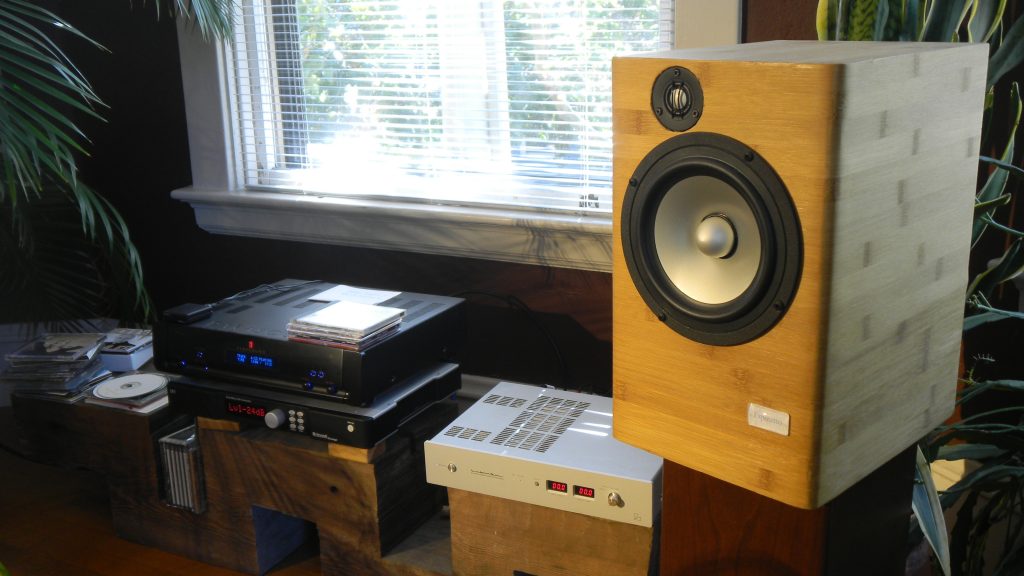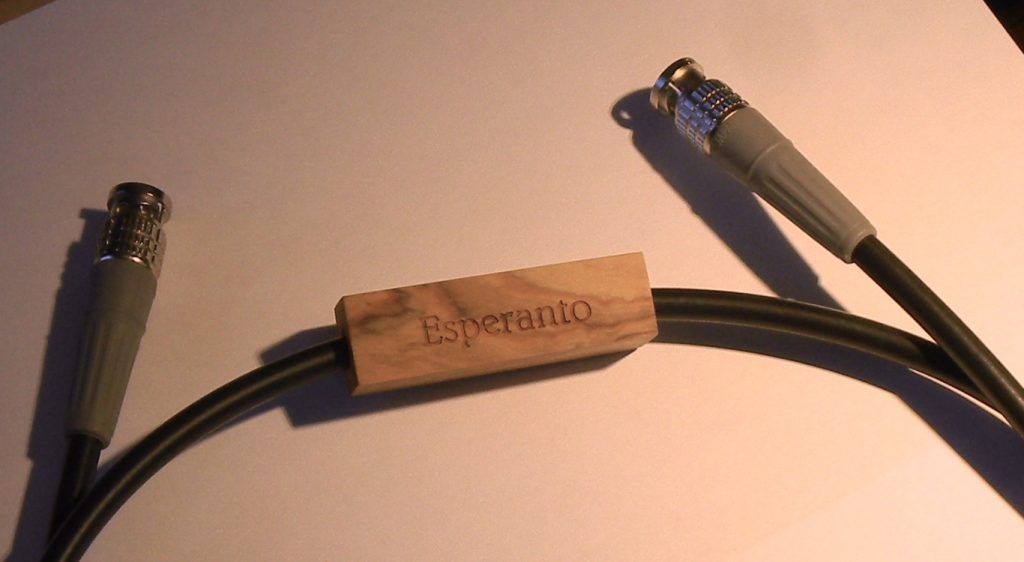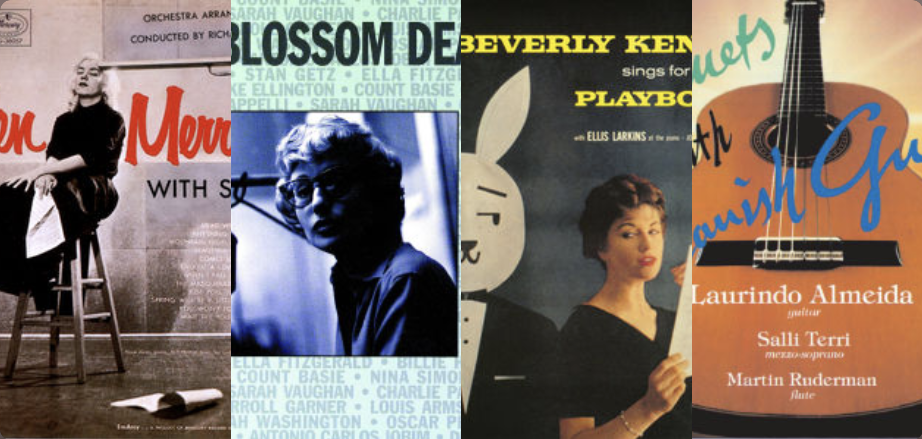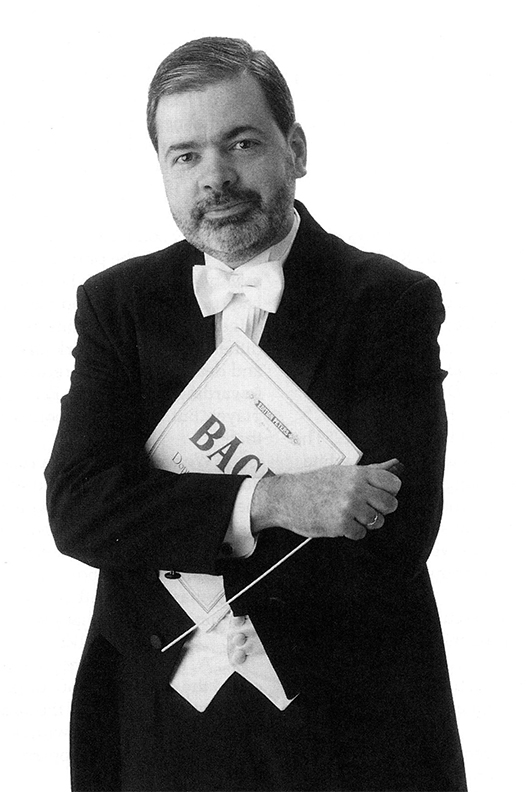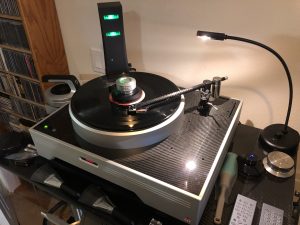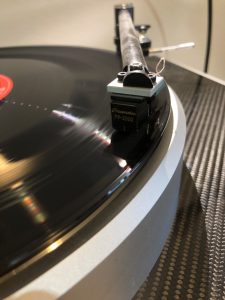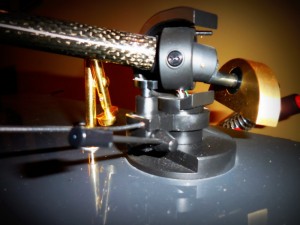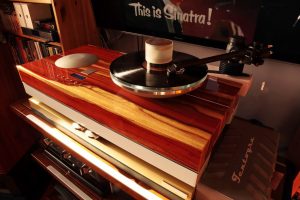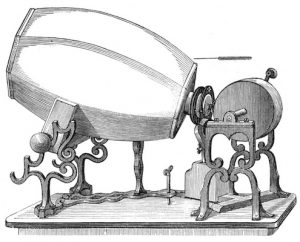Herein we have part two of our good audio friend John Marks, he of The Tannhauser Gate blogging fame, in which he continues his series on transferring and digitizing LPs in a cost-effective way. Many PF readers will find this series to be of assistance, as they seek to archive their valuable, but so very fragile, analog records.
Read on!
Dr. David W. Robinson, Ye Olde Editor
Photo by John Marks; Berlin the Bear not included.
This is the second installment in a series about choosing Pareto-Optimal equipment to make digital archival copies of vinyl LP (long-playing) phonograph records. The first part is HERE. But even if you are not planning on making digital transfers, you might be interested in my advice on turntables and phono stages.
The turntable system (by which I mean the turntable itself; the tone arm; and the phono cartridge) is both the beginning of the playback process and, by the nature of things, the most critical bottleneck.
After the photograph, more on that; and, well-deserved words of praise for Rega's Planar 3.
Rega Planar 3, in black, with the Elys 2 moving-magnet phono cartridge.
One would almost be tempted to say that the miracle of LP playback is that it works at all.
LPs are so-called because they are long-playing, in comparison to 78-rpm discs. An LP can play for about 20 minutes per side; a 78 rpm can only play for three minutes or so. An LP plays longer than a 78 for three reasons. One, the standard LP is 12 inches in diameter; the standard 78 is 10 inches. Two, the LP turns much more slowly: circa 33 rpm, versus circa 78 rpm. Finally, the grooves on the LP disc are much narrower, and so can be spaced much more tightly.
The more tightly-spaced LP grooves mean that some rather drastic engineering work-arounds are necessary, in view of the orders-of-magnitude relationship among the frequencies (and therefore the wavelengths) of musical pitches.
To give an example, the top note of the first phrase of the solo part of Mendelssohn's violin concerto is the octave E on the E string, circa 1320Hz. A few measures later, the double basses (which sound notes one octave below what is written) play low Es, at circa 41Hz. The high E has a wavelength of about 10 inches, whereas the low E has a wavelength of about 27 feet. Fitting both notes into the same LP groove requires that the high frequencies get boosted and the low frequencies get cut—radically.
Proper playback is then accomplished by doing the inverse: boosting the low frequencies and cutting the high frequencies. The RIAA playback curve is shown here in red (courtesy Wikipedia):
On playback, the bass output from the phono cartridge gets boosted (in theory) by as much as 20dB. That's a lot -20dB represents an amplitude difference of 10X. And that's why the very process of cutting an LP bakes into the loaf the problem that along with the music that is being reconstructed, any and all noise made while making the record player's platter spin will get boosted by 10X. A very quiet motor, drive system, and platter bearing are essential components of good LP playback. Rega's recently updated (2016) Planar 3 costs a non-trivial amount of money ($1145 with the Elys 2 moving-magnet phono cartridge installed and ready to go; $945 on its own). However, I think that it is a value leader in its category. If that is too much money, Rega's line starts with the P1, their entry-level turntable, under $500 for the package with cartridge.
Rega's US importer Steve Daniels of The Sound Organisation (Dallas, TX) says, "Rega's mission is to make high-quality audio products of all kinds at sensible prices, as a means of reproducing music as faithfully as possible." I should note that Rega also makes digital sources, amplifiers, and loudspeakers… . To locate your nearest dealer, click HERE and enter "Rega" under "Brand." (Even though the Planar 3 is, to the greatest extent possible, a "plug-and-play" design, I do think that for turntables, having a local dealer is usually a good thing.)
Rega's newest Planar 3 turntable is a culmination of evolutionary improvements upon the product that launched the company in Essex (UK) in 1973. That said, the quality jump from its immediate predecessor to the new turntable is substantial, though the price remains in the same tier—Bravi, tutti.
The motor system has been improved, and the glass platter and the tone arm are completely new. The only things that remain the same are the dust cover and its hinges. The industrial design is much cleaner, and with a higher level of fit and finish. I just love the look of the glass platter, and I am assured that it sounds better than its predecessor. Aesthetics are a matter of taste, but I think that the Planar 3's industrial design is class-leading, especially with the white plinth.
The Planar 3 is made all under one roof in the UK, by a company with a long track record of dedication to common-sense (rather than fetishistic) high-quality audio equipment. What I like most about the Planar 3 package is that the turntable, tonearm, and cartridge co-evolved in terms of design, and were designed to work as a system.
Courtesy Rega Research Ltd.
Not only are the tonearm and cartridge designed for synergy; the tonearm's integral headshell and the cartridge's mounting system were designed to be as foolproof as possible. Rega's tonearms and LP cartridges make provision for a third mounting bolt. The additional bolt, which is front and center, ensures that zenith (that the cartridge body and the headshell are parallel) and overhang are dialed in, without the need for templates or judging by eye. (Rega also makes a special monophonic cartridge for 78 rpm playback; however, as far as I can see, that special cartridge does not have any provision for a third fixing bolt.)
The Planar 3 is a pleasure to set up and use. The lack of adjustments (other than tracking weight and anti-skating compensation) I think of a a feature, rather than a deficit. There's less to mess up. Same for the high-quality captive interconnects that carry the output to the phono stage. If you want something tweakier, or want to choose your own interconnects, there are many other turntables to fill your needs. If you want a decisive performance improvement over entry-level plug-and-play setups while getting your money's worth, the Planar 3 package is the best option I am aware of.
I used the Planar 3/Elys 2 combination to make a transfer of David Oistrakh's Brahms violin concerto recording with George Szell and the Cleveland Orchestra (Angel SFO-36033, both stampers "F2 #2"). This LP is one of several I own that ultimately derive either from the original (and apparently lost) 1969 master tape, or a compromised copy of it.
This particular LP has Angel's "mustard and brown" LP label (see topmost photo), rather than the later orange label with the pen-and-ink sketch of the Recording Angel. Therefore, it is a first pressing or a very early pressing, almost doubtless from 1970. It plays back very close to the Cleveland Orchestra's true pitch of A = 440Hz. The phono stage was a Graham Slee Revelation M; the analog-to-digital converter was a Sound Devices USBPre 2. Both will be reported upon soon.
David Oistrakh, Brahms violin concerto; Cleveland May 1969, Mvmt I, the A-major interlude.
I was just tickled during my time with the new Planar 3. What a well-thought-out and well-made product!
The last Rega turntable I had here was the (since replaced by the Planar 1) RP1, a couple of years ago. The Planar 3 costs more, but it seems to me that you get a lot more. Highly recommended.





